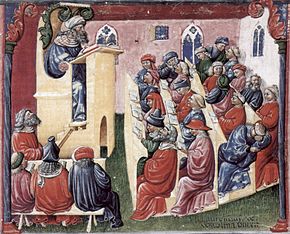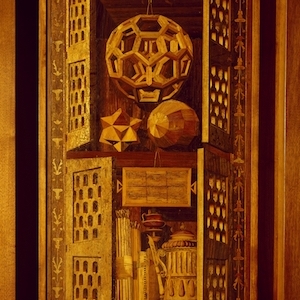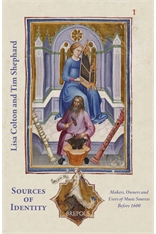Every now and then the topic of historical listening resurfaces in musicology. There follow a flurry of thoughtful contributions, special journal issues, and more recently fascinating departures like the economy of sound in medieval city scapes. Conclusions are drawn from the careful analysis of historical texts, pictures and scores, bold assertions made about differences between past and present listening practices, and the seemingly inevitable conclusion reached that each human being is a creature of her times, whose musical listening, however it is defined, is a product of environment, culture and context. In many respects those conclusions are inevitable, but uncertainties remain.
The basic hardware of human hearing hasn’t changed for tens if not hundreds of millennia, both in terms of the physiology of the ear but also the paths of the brain leading to musical perception. Yet, culture (and ecology) shapes the final ends of that perception, and by extension how human’s use language to describe the effects and feelings experienced in listening to music. Often those terms are metaphorical in the sense that they are borrowed from one domain to function in a different domain. A term that is found in exceeding abundance to described approbative effects in pictures, sculptures, metalwork, speech and music is sweetness. The fact that sweetness is a term used in the first instance to describe the a sensory response by the sense of taste to certain substances, e.g. sugar, doesn’t stop it from it being borrowed into other sensory realms and even emotion itself. The multimodality of a term like sweetness is one that is taken for granted today, but when looking at the past, it often assumes the role in describing how people took pleasure in the experience of smelling certain smells (some of which, like the sweet odour of sanctity of a deceased saint might seem incomprehensible or downright perverse), of hearing certain sounds and of seeing certain sights. Today we still have the idea or concept of sweetness but is it the same as medieval sweetness (allowing for the fact different words were used to denote sweetness), especially when associated to features of music? In particular, consonance and some musical structures that emphasis consonance are described as “sweet”; but would present-day listeners, whose experiences would seem to be so different from those of the medieval, still associate them “sweet”?
With some of these questions in mind, I collaborated with a music psychologist and cognitive linguist in 2018 to conduct a small set of studies that examined medieval and present-day associations of sweetness with musical consonance in medieval music. Of course it would have proven very difficult to find some medieval listeners to participate in the study. So the next best thing we could do was to use the writings of medieval authors to try and reconstruct a simple model for the association of sweetness with musical consonance. We decided to focus on the writings of Johannes Boen, and particularly one of the pieces of music that he discussed in his Musica of 1357, namely the motet Se grasse/Cum venerint/Ite missa est that is found at the end of the famous “Tournai Mass” from the middle of the 14th century. After reconstructing medieval models of musical listening, we conducted two experiments that sought to understand how present-day listeners associated “sweet” words with musical structures in the motet Se grasse and then isolated building blocks of medieval music performed by female and male voices and on a small chamber organ.
I am pleased to announce that the findings of this preliminary study will appear soon in the September issue of Music Perception. Thanks to the generous author agreement, I can share a copy of this article for the purpose of private study (no further use is permitted), coauthored with former UNE music psychology colleague Dr Kristal Spreadborough and UNE colleague in Linguistics Dr Inés Antón-Méndez. The full citation and abstract of the article is:
Jason Stoessel, Kristal Spreadborough, and Inés Antón-Méndez. “The Metaphor of Sweetness in Medieval and Modern Music Listening.” Music Perception 39, no. 1 (September 2021): 63-82. https://doi.org/10.1525/MP.2021.39.1.63






You must be logged in to post a comment.